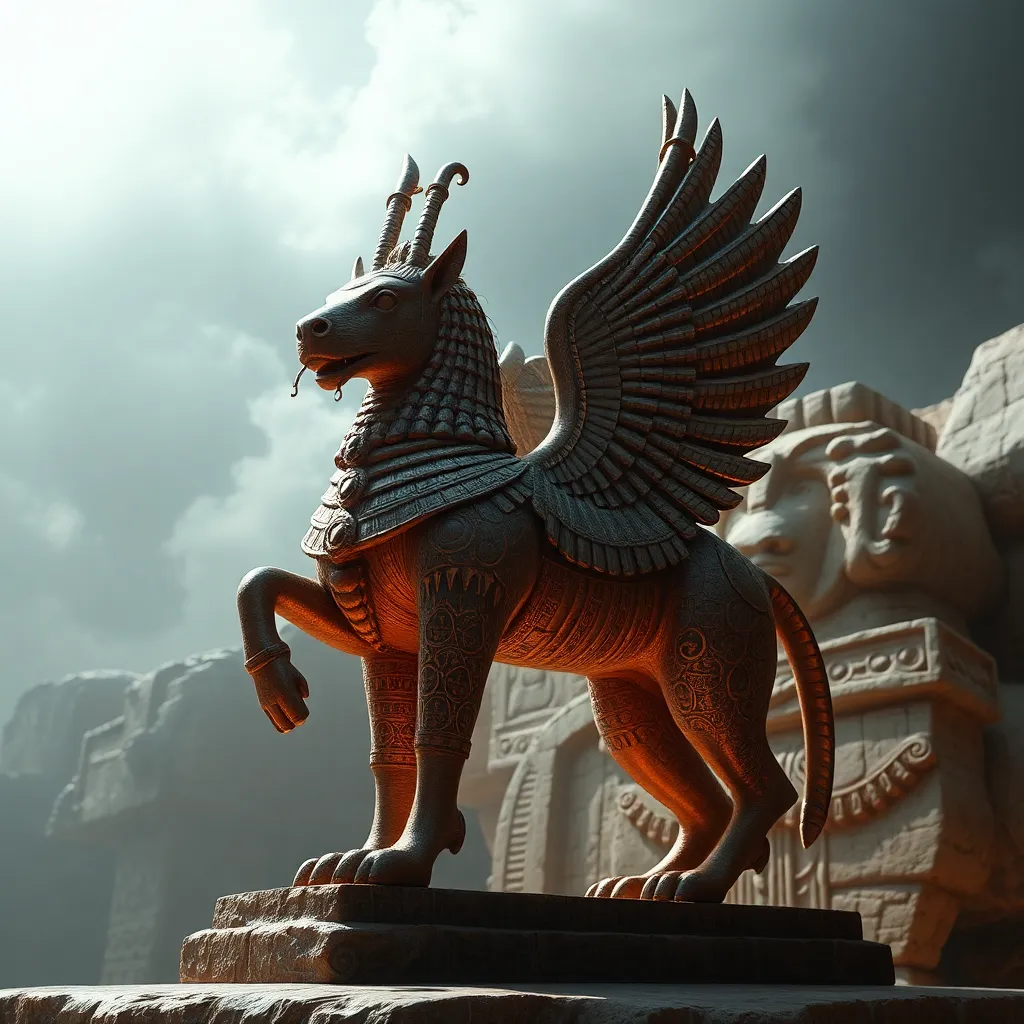The Lamassu as a Divine Messenger: Investigating its Role in Mesopotamian Religion
I. Introduction
The Lamassu is a fascinating hybrid creature that combines the features of a human, an eagle, and a bull or lion. It is often depicted as having the body of a large animal, the wings of an eagle, and the head of a human. This unique design has made the Lamassu an enduring symbol in Mesopotamian culture.
In ancient religions, divine messengers played a crucial role in communicating the will of the gods to humanity. They were seen as intermediaries that could bestow blessings, offer protection, and convey important messages. This article aims to explore the role of the Lamassu within the context of Mesopotamian religion, examining its historical significance, physical characteristics, protective functions, and theological implications.
II. Historical Context of Mesopotamian Religion
Mesopotamian civilization, often referred to as the “cradle of civilization,” was located between the Tigris and Euphrates rivers. This region is known for its rich cultural and religious history, which included a pantheon of deities, each with distinct attributes and responsibilities. The belief systems of the Mesopotamians were deeply intertwined with their understanding of the cosmos and the forces that governed their lives.
Deities were central to Mesopotamian religion, and divine intermediaries, such as the Lamassu, held significant importance. The emergence of the Lamassu can be traced back to the early periods of Mesopotamian history, where it began to symbolize protection and divine favor, particularly in the context of urban centers and sacred spaces.
III. Physical Characteristics of the Lamassu
The Lamassu is a striking figure, characterized by its hybrid features that convey both strength and wisdom. The physical attributes of the Lamassu include:
- Human Head: Symbolizes intelligence and divine connection.
- Wings: Represent swiftness and the ability to traverse between realms.
- Animal Body: Typically depicted as a lion or bull, signifying strength and power.
This unique combination of traits imbues the Lamassu with a rich symbolism. Its design reflects the Mesopotamian belief in the interconnectedness of the earthly and divine realms, serving as a guardian that embodies both physical might and spiritual wisdom.
Artistic representations of the Lamassu varied across different Mesopotamian cultures, from the Assyrians to the Babylonians. Each representation maintained core elements while adapting to local artistic styles and cultural values.
IV. The Role of the Lamassu as a Protector
One of the primary functions of the Lamassu was its role as a protector. These formidable figures were often placed at the entrances of cities and temples, serving as guardians against evil spirits and malevolent forces. The Lamassu’s protective nature was deeply intertwined with its function as a divine messenger.
Key aspects of the Lamassu’s protective role include:
- Guarding sacred spaces: Lamassu statues were prominently positioned to safeguard temples and palaces.
- Symbolizing divine approval: Their presence was believed to signify the favor of the gods upon the city or structure.
- Deterring enemies: The imposing figures were meant to intimidate would-be invaders and ensure the safety of those within.
Numerous archaeological sites, including the grand palaces of Assyria, feature installations of the Lamassu, highlighting their significance in the protection of ancient Mesopotamian civilization.
V. Lamassu and the Concept of Divine Intervention
The Lamassu also served as intermediaries between the gods and humans, playing a crucial role in conveying divine messages and intervention. In various myths and stories, the Lamassu were depicted as messengers who communicated the will of the gods to mortals.
Examples of Lamassu’s involvement in divine narratives include:
- Mythological tales where Lamassu deliver warnings or guidance from the gods.
- Rituals invoking the Lamassu’s protection during times of crisis or conflict.
- Depictions in art that illustrate the Lamassu as a conduit for divine wishes.
Rituals associated with the Lamassu often involved offerings and prayers to invoke their protection and ensure the gods’ favor. These practices underscored the significance of the Lamassu as a bridge between the divine and the mortal realms.
VI. Theological Significance of the Lamassu
Within the framework of Mesopotamian theology, the Lamassu holds a unique position. As a divine messenger, it is intertwined with the narratives of major deities, such as Marduk and Ishtar. The dual nature of the Lamassu as both protector and messenger enriches its theological significance.
Key theological interpretations include:
- The Lamassu as a symbol of divine order, representing the balance between chaos and stability.
- Its connection to fertility and abundance, reflecting the agricultural importance of the region.
- The implications of its hybrid nature, emphasizing the interplay between different aspects of existence.
The Lamassu’s presence in religious narratives reinforces its status as a vital figure in the pantheon of Mesopotamian deities, embodying the complexities of faith and the human experience.
VII. The Legacy of the Lamassu in Later Cultures
The influence of the Lamassu extends beyond ancient Mesopotamia, impacting subsequent civilizations and religions. Its iconic form has been adapted and reinterpreted in various cultural contexts.
Examples of this legacy include:
- Incorporation of Lamassu-like figures in Persian art and architecture.
- Reimagining of the Lamassu in modern literature and popular culture as symbols of strength and protection.
- Contemporary artistic interpretations that draw inspiration from the Lamassu’s unique features.
Today, the Lamassu continues to be a subject of fascination, representing not only the rich heritage of Mesopotamian culture but also the timeless themes of protection and divine communication.
VIII. Conclusion
In summary, the Lamassu plays a multifaceted role in Mesopotamian religion, serving as a protector, a divine messenger, and a symbol of theological significance. Its unique hybrid form and protective functions highlight the complexities of ancient belief systems and the ways in which the divine was understood and represented.
The enduring legacy of the Lamassu as a symbol of protection and divine communication invites further exploration into ancient symbols and their meanings in contemporary contexts. As we continue to investigate these ancient emblems, we gain deeper insights into the values and beliefs that shaped early civilizations.




